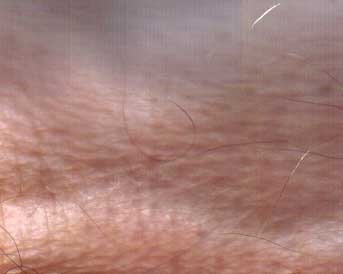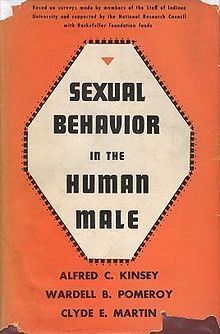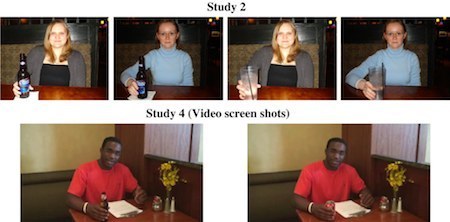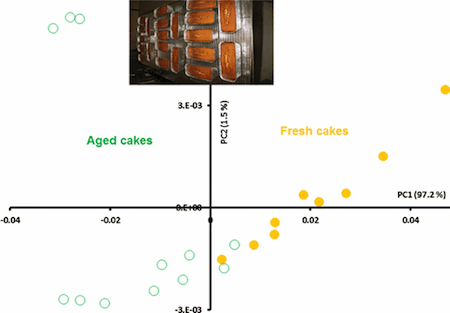Marc Abrahams's Blog, page 505
March 25, 2013
The Value of Vomit (for Rollers)
Vomit is, for the birds, of fearful value, suggests this study:
“Rollers smell the fear of nestlings,” D. Parejo, L. Amo, J. Rodríguez and J.M. Avilés, Biology Letters, epub 2012. The authors, at EEZA, CSIC, Almería, Spain, report:
“Some bird species produce chemical compounds when threatened, such as nestlings of the Eurasian roller Coracias garrulus [pictured here, via Wikipedia] that vomit an odorous orange liquid when scared in their nests. Here, we experimentally explore the possibility that parents were informed about recent predation attempts at their nests through the olfaction of this vomit.”
(Thanks to investigator Nick Carstoiu for bringing this to our attention.)

March 24, 2013
The Philosophy of Skin – It’s a wrap. (Thanks, Heidegger’s Verstehen!)
 A great deal of academic research has focussed on skin. Indeed, skin regularly features heavily in several specialist scholarly journals – not only covering its behaviour and its problems, but also its aesthetics. But less weight has been afforded to inquiries regarding what might be called the the ‘philosophy’ of skin.
A great deal of academic research has focussed on skin. Indeed, skin regularly features heavily in several specialist scholarly journals – not only covering its behaviour and its problems, but also its aesthetics. But less weight has been afforded to inquiries regarding what might be called the the ‘philosophy’ of skin.
The balance may have shifted, though, with the publication of ‘Reflections on Skin‘ in the Journal of Dance & Somatic Practices, Volume 2 Issue 2, where author Jennifer-Lynn Crawford MA (Lecturer in Release Technique at the Northern School of Contemporary Dance, Leeds, UK) explores the phenomenon of our outermost wrapping.
“The exploration that follows takes up the phenomenon of our outermost wrapping, skin, and considers it as a horizon that both separates us from and puts us in touch with the world.
The first part takes up skin phenomenologically, articulating the unique significance of skin as experienced in a somatic movement practice and exploring the potential of embryology as a narrative ground on which to re-interpret and flesh out touch and movement.
The second part draws these two strands together in positing a thinking skin, or tactile cognition. Such a thinking is unfolded through Heidegger’s Verstehen, his particular construal of understanding as situated and existence as fundamentally interpretive, as well as Maxine Sheets-Johnstone’s seminal writings on animate life.”
Notes:
[1] For a simplified overview of Heidegger’s Verstehen, see this page hosted by the Department of Philosophy at Carnegie Mellon University, USA.
[2] For an alternative viewpoint on the nature of skin see this video featuring Allan Sherman:

March 23, 2013
When computers gather reviews: The Haslam Case
When a web site gathers book reviews automatically, having a computer do it flatly by recipe, the results sometimes come out like this, from the Cakitches web site:
Haslam, Nick. Kinds of Kinds: A Conceptual Taxonomy of Psychiatric Categories Philosophy, Psychiatry,” e Psychology – Volume 9, Number 3, September 2002, pp. 203-217 The Johns Hopkins University Press A pluralistic view of psychiatric classification is defended, according to which psychiatric categories take a variety of structural forms….
“Nicky Haslam has known everyone from Greta Garbo to Cole Porter to the Royal Family, with many unforgettable eccentrics in between…. Masterpiece is an overused word, but this Proustian evocation is indeed a masterpiece.”
Nick Haslam received his PhD in social and clinical psychology from the University of Pennsylvania, and taught for several years at the New School for Social Research in New York City…. He has written widely on a variety of topics, including prejudice, dehumanization, psychiatric classification, personality types, and social relationships.
That site does not provide links to the works. The reviews seem to pertain to literary works by different Haslams, one by Nick (this Nick), one by Nicky (this Nicky).
BONUS: Kakitches reviews Barney Goes to the Dentist

McManus adds Danish twist to Kinsey’s genital left/right data
 Tom Whipple reports, in the Times [we suggest you click on that link, so you can see the photograph that accompanies the Times article]:
Tom Whipple reports, in the Times [we suggest you click on that link, so you can see the photograph that accompanies the Times article]:
Mankind hanging on Professor Y-fronts every word
Even Alfred Kinsey, the unembarrassable grandfather of sexology who happily discussed sadomasochism and homosexuality, went a bit coy with this question.
“On which side of the central seam in your pants,” he asked participants in his 1948 study Sexual Behaviour in the Human Male, “do you keep your penis?” The rest of Kinsey’s research would be published in that groundbreaking report. But it would be five decades before society was deemed ready for the results of the genital asymmetry data, and a decade more before, today, someone was ready to repeat it…
That someone is Chris McManus, Professor of Psychology and Medical Education at University College London.

Professor McManus, noting that Kinsey had collected certain data that was never published, decided to collect additional data on the same questions. Professor McManus collected that data during the recent Ig Nobel tour of Denmark. He will present a preliminary report about it on April 4, at the Institute of Engineering and Technology in London, as part of the final event on this year’s Ig Nobel tour of the UK.
Professor McManus was awarded the 2002 Ig Nobel Prize in medicine for his study “Scrotal asymmetry in man and ancient sculpture“. That study was published in the journal Nature [vol. 259, February 5, 1976, p. 426.].
BONUS: Professor McManus is editor of the scholarly journal Laterality.

Ask not for whom the cock crows — Ask for whom the clock goes
Clocks rule cocks, crows this study:
“Circadian clock determines the timing of rooster crowing,” Tsuyoshi Shimmura and Takashi Yoshimura, Current Biology, Volume 23, Issue 6, March 18, 2013, pp. R231-R233. The authors, at Nagoya University, Japan, report:
“Crowing of roosters is described by onomatopoetic terms such as ‘cock-a-doodle-doo’ (English), ‘ki-ke-ri-ki’ (German), and ‘ko-ke-kok-koh’ (Japanese). Rooster crowing is a symbol of the break of dawn in many countries. Indeed, crowing is frequently observed in the morning. However, people also notice that crowing is sometimes observed at other times of day. Therefore, it is yet unclear whether crowing is under the control of an internal biological clock, or is simply caused by external stimuli. Here we show that predawn crowing is under the control of a circadian clock. Although external stimuli such as light and crowing by other individuals also induce roosters’ crowing, the magnitude of this induction is also regulated by a circadian clock.”
BONUS: Video of a rooster crowing:

Ig Nobel winner Frans de Waal: The intelligence of animals
Ig Nobel Prize winner Frans de Waal published an essay about “The Brains of the Animal Kingdom“, in the Wall Street Journal. It begins:
Who is smarter: a person or an ape? Well, it depends on the task. Consider Ayumu, a young male chimpanzee at Kyoto University who, in a 2007 study, put human memory to shame. Trained on a touch screen, Ayumu could recall a random series of nine numbers, from 1 to 9, and tap them in the right order, even though the numbers had been displayed for just a fraction of a second and then replaced with white squares
I tried the task myself and could not keep track of more than five numbers—and I was given much more time than the brainy ape. In the study, Ayumu outperformed a group of university students by a wide margin. The next year, he took on the British memory champion Ben Pridmore and emerged the “chimpion.
How do you give a chimp—or an elephant or an octopus or a horse—an IQ test? It may sound like the setup to a joke, but it is actually one of the thorniest questions facing science today. Over the past decade, researchers on animal cognition have come up with some ingenious solutions to the testing problem. Their findings have started to upend a view of humankind’s unique place in the universe that dates back at least to ancient Greece….
de Waal and Jennifer Pokorny were awarded the 2013 Ig Nobel Prize in anatomy, for discovering that chimpanzees can identify other chimpanzees individually from seeing photographs of their rear ends. (For details of that research, see their study “Faces and Behinds: Chimpanzee Sex Perception“, Advanced Science Letters, vol. 1, 99–103, 2008.)
BONUS: Hereis info about Ayumu. And here’s video of Ayumu displaying her number chops:

March 22, 2013
Roi’s brain numbers improvement zapper machine
Roi Cohen Radosh of Oxford has applied for a patent for his method of zapping (so to speak) the brain with electricity. “APPARATUS FOR IMPROVING AND/OR MAINTAINING NUMERICAL ABILITY” is the title of international patent #WO 2011/098789 Al, published on August 18, 2011. Here’s a detail from the document:

The patent document itself demonstrates a comfort with numbers, as in this passage:
The apparatus may be adapted to deliver the electrical current to the brain for at least 30 s, 1 min, 2 min, 3 min, 4 min, 5 min, 6 min, 7 min, 8 min, 9 min, or 10 min per session. The apparatus may be adapted to deliver the electrical current to the brain for at least 11 min, 12 min, 13 min, 14 min, 15 min, 16 min, 17 min, 18 min, 19 min or atleast 20 min per session. The apparatus may be adapted to deliver the electrical current to the brain for less than 6 hours, 5.5 hours, 5 hours, 4.5 hours, 4 hours, 3.5 hours, 3 hours, 2.5 hours, 2 hours, or 1.5 hours per session. The apparatus may be adapted to deliver the electrical current to the brain for less than 60 min, 50 min, 40 min, 30 min, or less than 25 min per session.
(Thanks to investigator Ed Pegg for bringing this to our attention.)

The Glass is Half Held-Against-You: The imbibing idiot bias
The imbibing idiot bias. That’s what this study is all about. The imbibing idiot bias:
“The imbibing idiot bias: Consuming alcohol can be hazardous to your (perceived) intelligence,” Scott I. Rick and Maurice E. Schweitzer, Journal of Consumer Psychology, Volume 23, Issue 2, April 2013, Pages 212–219. (Thanks to investigator Neil Martin for bringing this to our attention.) The authors, at the University of Michigan and the University of Pennsylvania, explain:
“Across five studies, we find that in the absence of any evidence of reduced cognitive performance, people who hold an alcoholic beverage are perceived to be less intelligent than those who do not, a mistake we term the imbibing idiot bias. In fact, merely priming observers with alcohol cues causes them to judge targets who hold no beverage at all as less intelligent. The bias is not driven by a belief that less intelligent people are more likely to consume alcohol. We find that the bias may be costly in professional settings. Job candidates who ordered wine during an interview held over dinner were viewed as less intelligent and less hireable than candidates who ordered soda. However, prospective candidates believe that ordering wine rather than soda will help them appear more intelligent.”
Here’s detail from the study:

March 21, 2013
Bubble Weapons: one way to sink a ship
 The next time you hear the phrase : “You can’t sink a battleship by blowing bubbles at it.” you’ll be able, with some degree of confidence, to inform the speaker that they’re probably wrong.
The next time you hear the phrase : “You can’t sink a battleship by blowing bubbles at it.” you’ll be able, with some degree of confidence, to inform the speaker that they’re probably wrong.
A new US patent issued on Feb 12th 2013, describes what the inventors call a Bubble Weapons System. Fanciful though it may seem, the owner of the patent, the Raytheon Company, has a long history and solid track-record in designing, implementing and selling devices to reliably detect and incapacitate people and property.
The new system unleashes “bubble plumes” which can, claim Raytheon, create large regions of “bubbleized” water. These plumes can not only damage a ship’s power-train, but also, in the case of a large vessel, sink it by causing it to break in two due to uneven buoyancy. [see drawing]
Oddly perhaps, the patent avoids mentioning how the bubbles are to be generated. But clues to the operation may be found in previous bubble-related documents which the patent refers to, e.g. ‘Buoyancy dissipater and method to deter an errant vessel’. Which specifies various school-chemistry lab materials which are ignited within the cannister – creating a type of highly counterintuitive device. Essentially a large and sophisticated underwater firework. The other patent (app.) ‘Vortice Amplified Diffuser‘ sets out an even more counterintuitve scenario : “Some embodiments pertain to controlling the lethality levels of a non-lethal interdiction weapon.”
REQUEST FOR CLARIFICATION: Improbable requires assistance towards understanding the previous sentence. How can non-lethal weapons have differing lethality levels?

Advanced Techniques for Monitoring Changes in Sponge Cakes
Comes news of an advance in Sponge Cake research:
“Monitoring Changes in Sponge Cakes during Aging by Front Face Fluorescence Spectroscopy and Instrumental Techniques,” Eliot Patrick Botosoa, Christine Chénè, and Romdhane Karoui, Journal of Agricultural and Food Chemisrty, 2013, 61 (11), pp 2687–2695. (Thanks to investigator Tom Gill for bringing this to our attention.) The authors, at Université d’Artois in Lens, France and ADRIANOR in Tilloy les Mofflaines, report:
” In the present study, sponge cakes, produced at the pilot scale, were monitored during aging (i.e., 1, 3, 6, 9, 16, and 20 days) by three different analytical techniques. For the texture analyzer, the hardness and elasticity of crumb cakes were found to significantly increase and decrease, respectively, throughout aging. Color parameters (L*, a*, and b*) showed only slight change throughout aging, and a high correlation (R2 = 0.88) was observed between the whiteness and the yellowness. Tryptophan fluorescence spectra (excitation, 290 nm; emission, 305–490 nm) recorded on cakes exhibited three maxima located at 382, 435, and 467 nm that were attributed to maximum emission of tryptophan (382 nm) and fluorescent Maillard reaction products (435 and 467 nm). The principal component analysis (PCA) applied to the tryptophan spectra allowed a clear discrimination of cakes aged for 1, 3, and 6 days from those aged for 9, 16, and 20 days.”
Here’s detail from the study:

Marc Abrahams's Blog
- Marc Abrahams's profile
- 14 followers





